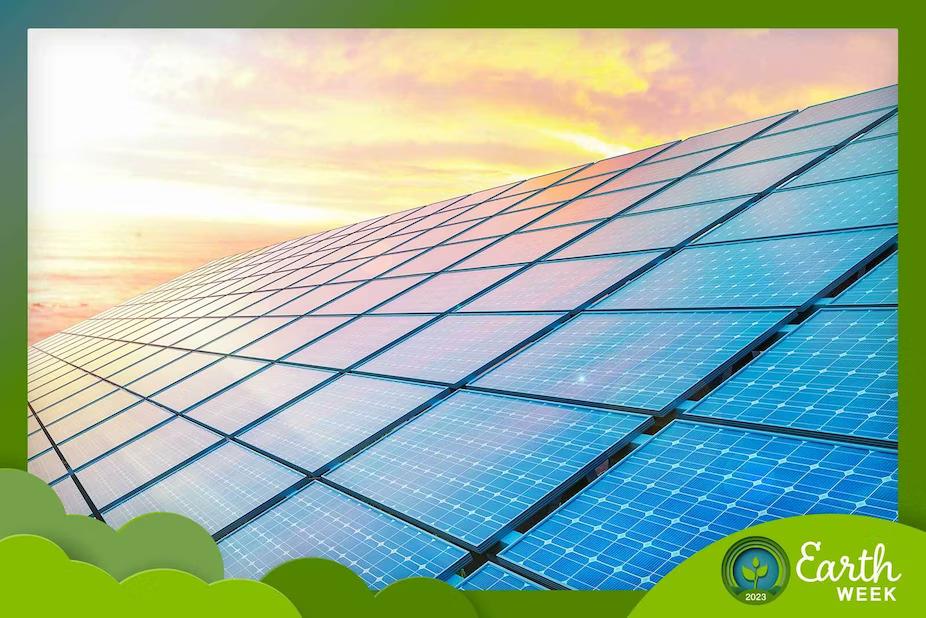The Future Looks Bright
Investing in solar farms yields sunny results.

By Dana Obrist
As part of our Earth Day celebration, Regions is highlighting ways that our associates, customers and community partners are making life better by helping to protect our environment.
From small fields powering local communities to large-scale acreage lighting up thousands of homes, businesses and communities are investing in a growing sustainable energy source.
Solar farms are cropping up in agricultural communities across the United States. And the future looks bright.
“Renewables have been growing at a double-digit rate for some time now although that growth rate slowed in 2022,” noted Jerry Wells, senior vice president and part of Regions Solar Tax Equity coverage team. “Since our team’s inception, we’ve financed more than 80 projects, creating an investment of $1.8 billion and growing.”
Regions Equipment Finance (REFCO) launched its specialty finance team focused on renewable energy and solar, closing the first project in 2016. Partnering with renewable power experts, this team provides tax equity financing to sponsors and developers of solar.
Renewables received a boost with the passage of the Inflation Reduction Act last year. Projects can be eligible for more in tax credits – historically, 30 percent, now up to 50 percent if the equipment is sourced domestically and in an energy community.
Jerry Wells, senior vice president and part of Regions Solar Tax Equity coverage team
“Renewables received a boost with the passage of the Inflation Reduction Act last year,” said Wells. “Projects can be eligible for more in tax credits – historically, 30 percent, now up to 50 percent if the equipment is sourced domestically and in an energy community.”
Wells noted that costs of building a solar farm have come down significantly, albeit inflation drove an increase in costs last year, while equipment efficiency has improved. States have been active in setting renewable portfolio standards with 10 states requiring 100 percent of power delivered required to come from renewable resources between 2030 and 2050.
“Public policy has driven the employment of renewable assets,” said Wells. “In addition to being better for the environment, it is now cost competitive with other sources of energy.”
Wells and the Solar Tax Equity coverage team partnered with Regions’ Energy and Natural Resources Group when the latter financed a construction loan to build a solar farm in 2018 with the tax equity team providing the permanent take-out financing. With a national mandate, Regions has a concentration of solar projects in the Southeastern United States but has projects on the West Coast and in the Northeast outside the company’s traditional footprint.
The solar development process takes several years from inception to installation.
“Our clients will work through their preliminary development phase over a 2–3-year period, which includes purchasing the land, project design, securing proper permitting and entitlements,” said Lee Hanna, vice president, Regions Energy and Natural Resources. “Once the preliminary development phase is complete, they will begin construction and installation. That process typically takes between six months and a year.”
A renewable source of power, solar energy plays a key role in reducing greenhouse gas emissions while improving air quality and reducing water use from energy production. These projects are part of a larger strategy in ESG working towards making life better in our local communities and throughout the country. This includes clients such as Silicon Ranch, a full-service solar and carbon solutions company with more than 160 projects across 15 states.
“Silicon Ranch is proud of the role we play in the energy transition, and what makes our work so rewarding is our ability to leverage that role as a driver of economic opportunity, providing significant investments in communities across the country, including Clay County and Early County, Georgia,” said Reagan Farr, Co-founder and CEO of Silicon Ranch. “This would not be possible without our neighbors welcoming us into their communities or without financial institutions including Regions Bank supporting our investments in the communities we serve and where we locate.”

